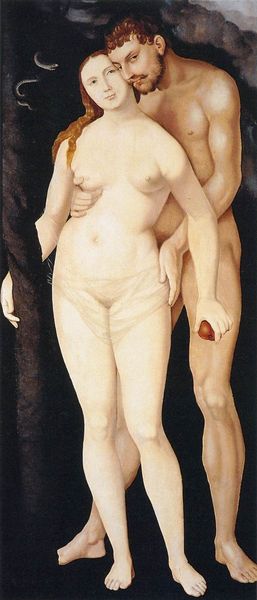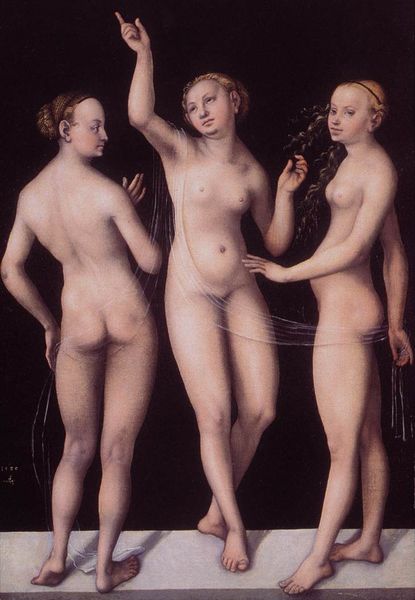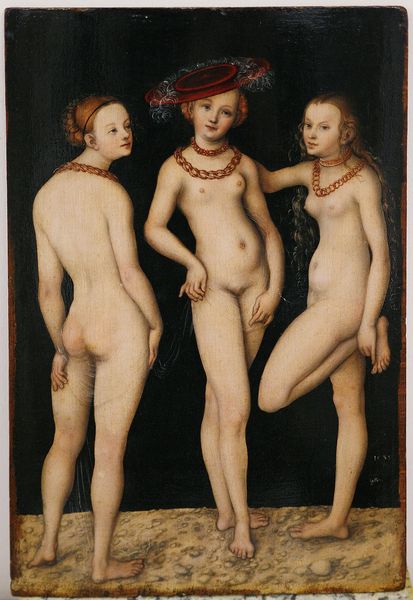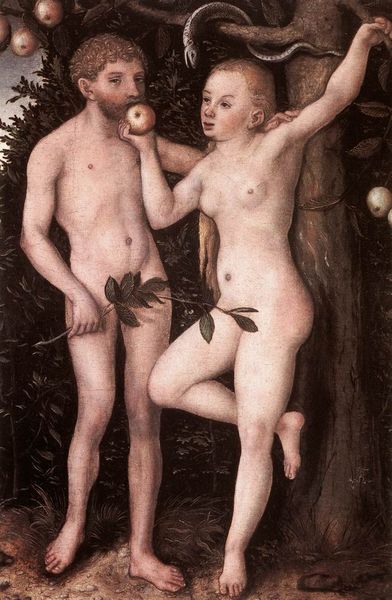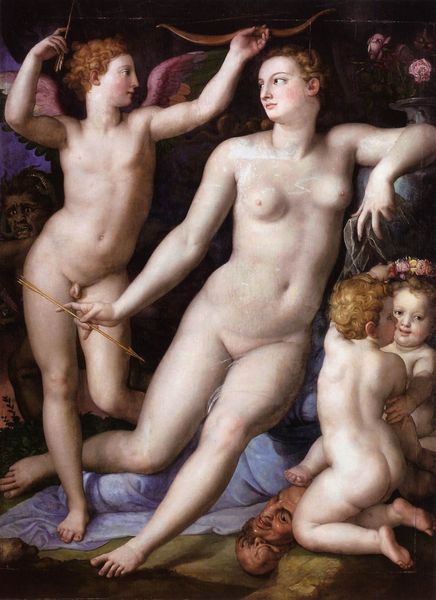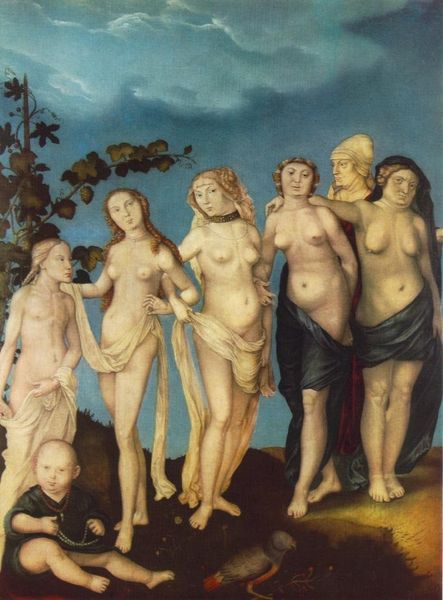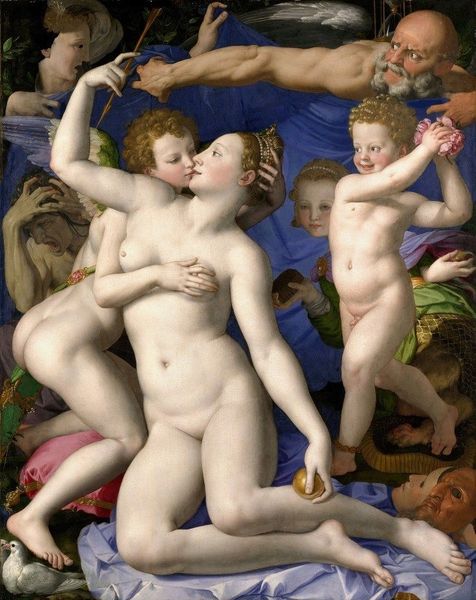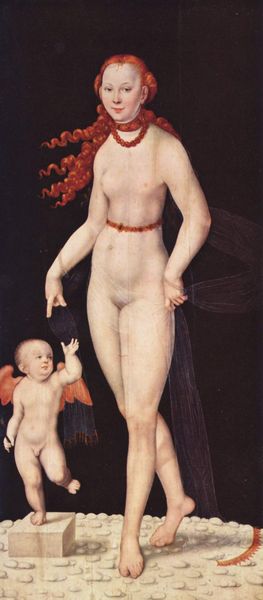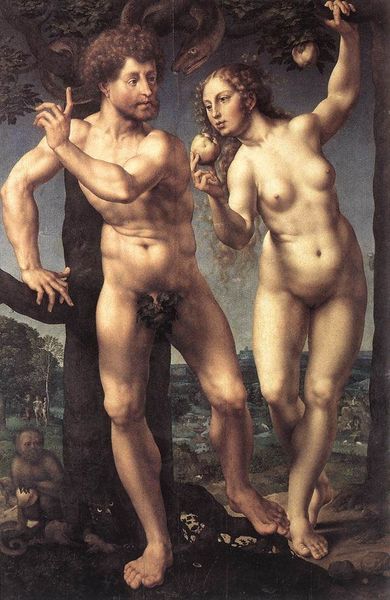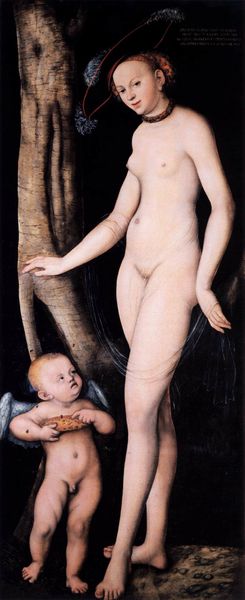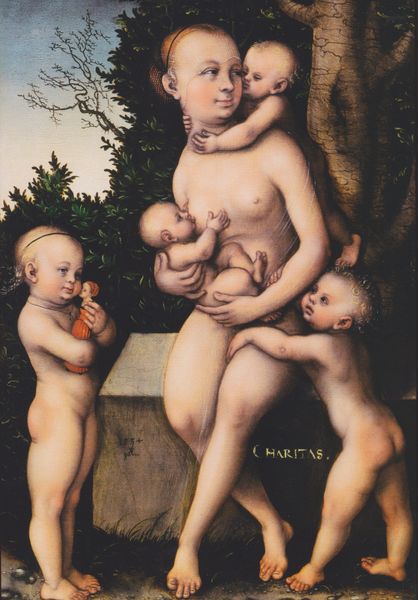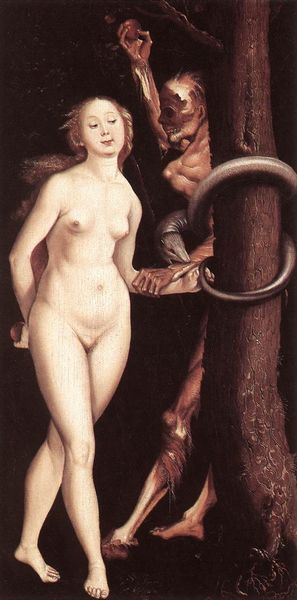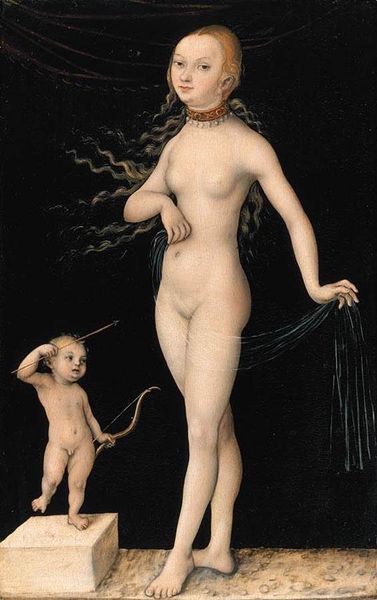
painting, oil-paint
#
portrait
#
allegory
#
painting
#
oil-paint
#
figuration
#
oil painting
#
female-nude
#
group-portraits
#
genre-painting
#
history-painting
#
northern-renaissance
#
academic-art
#
nude
#
portrait art
Dimensions: 57.5 x 38 cm
Copyright: Public domain
Editor: So here we have "The Three Graces" by Lucas Cranach the Elder, painted around 1530 using oil paint. What strikes me immediately is the almost unsettling directness of their gazes, especially combined with the figures' nudity. How do you interpret this work, and what cultural context is essential to understanding it? Curator: I see the figures, beyond their obvious symbolism as Grace, Beauty, and Joy, as a deliberate challenge to prevailing artistic and social norms. Cranach, a close friend of Martin Luther, used this painting to subtly critique the Catholic Church’s obsession with the body and sin. Notice how the figures aren’t idealized; their bodies are realistic, even a bit awkward. It rejects classical beauty standards. Editor: That’s fascinating! So the nudity isn't necessarily an invitation to voyeurism, but more of a statement against the hypocrisy of the time? Curator: Precisely! And consider Cranach's choice of depicting them as Northern European women, a subtle nod to the emerging Protestant values of the region, celebrating the natural form free from excessive religious condemnation. Look at the knowing glance of the figure on the left. Editor: It's like they are challenging the viewer. Were there any contemporary writers who shaped your thinking on this interpretation? Curator: The theories of Mikhail Bakhtin, especially his work on the carnivalesque and the body, provide valuable context. Bakhtin's idea of the "grotesque body" as a site of rebellion and subversion resonates deeply with Cranach’s artistic choices. What do you make of the landscape? Editor: It almost looks like a stage... Or that they could be anywhere or anytime, and are outside time itself, like mythological characters. Curator: Indeed! And by extension, he is suggesting a new framework for beauty, morality, and existence. These women occupy liminal spaces between worlds, between paradigms, like the nascent Protestant world. Editor: This has completely changed my view of the painting. I initially saw it as simply a classical allegory, but now I appreciate the nuanced social and religious critique it embodies. Thank you! Curator: It is these critical considerations that transform art history into a living dialogue with the past. Thanks for your insight, too!
Comments
No comments
Be the first to comment and join the conversation on the ultimate creative platform.
